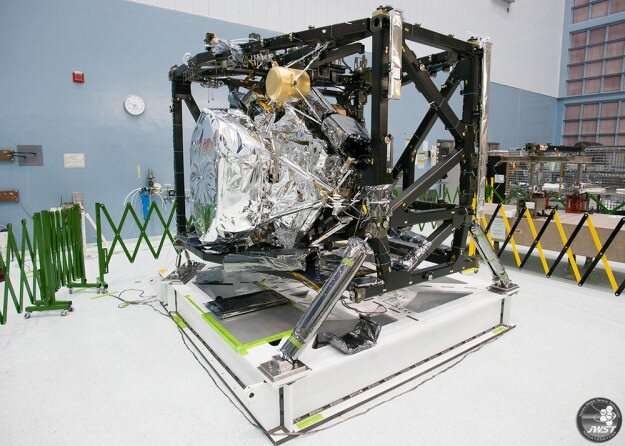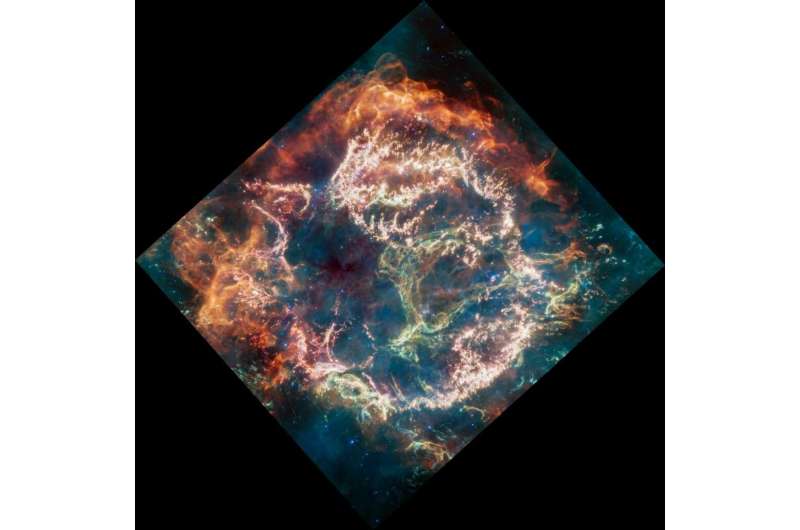
Final week, NASA shared a weblog put up saying they detected a sensor glitch related to the James Webb Area Telescope’s Mid-Infrared Instrument (MIRI). For some motive, the sensor for MIRI’s Medium Decision Spectroscopy (MRS) is receiving much less mild than anticipated on the longest wavelengths.
NASA is investigating the trigger, and stated that the instrument just isn’t in danger and no impact has been seen for pictures taken by MIRI. In keeping with company officers, all different modes of JWST and MIRI stay unaffected, and they’re looking for the underlying challenge.
The glitch was discovered this month throughout common calibration and monitoring of the telescope’s efficiency. NASA stated they routinely monitor all 17 observing modes of the telescope and once they in contrast the brightness of normal stars which have been well-cataloged by different observatories to what MIRI was receiving, group members seen a discrepancy within the knowledge.
In addition they in contrast how MIRI’s spectroscopy mode is working now versus the way it labored earlier within the mission and so they discovered that on the longest wavelengths, the throughput, or the quantity of sunshine that’s registered by MIRI’s sensors, has decreased for the reason that instrument was turned on and commissioned final yr.
This is not the primary challenge MIRI’s MRS has had. Final yr in August, whereas making ready for observations with MIRI’s MRS mode, the group detected elevated friction with one of many wheels, and described the friction as “grating” or “sticky.” The perform of the wheel is to pick between brief, medium and longer wavelengths. Engineers had been in a position to determine a option to work across the challenge and observations had been resumed in November 2022.

MIRI is likely one of the most vital devices onboard. It permits the telescope to see within the wavelength vary from 5 to 27 micrometers. The instrument has 4 modes: imaging, medium-resolution spectroscopy, low-resolution spectroscopy, and coronagraphy.
Engineers for the mission don’t but know if the 2 glitches are associated, however are at the moment growing a scientific plan to strategy, analyze, and discover the problem.
Within the meantime, MIRI observations will proceed as deliberate, and engineers will decide if there is a option to work round this challenge, too.
“The group will collect all related floor check and flight knowledge to completely assess MRS efficiency,” wrote JWST communications specialist Thaddeus Cesari. “Additional check observations might be taken to utterly characterize the character of the problem utilizing this specific mode of commentary. Subsequent, a plan for lengthy term-monitoring might be enacted, whereas the group continues to research the trigger, determine dangers, and discover mitigations that will doubtlessly enhance efficiency.”
One attainable mitigation or work-around technique consists of taking barely longer exposures when observing on the longer wavelengths to extend the sign to noise.
Supplied by
Universe At present
Quotation:
JWST’s MIRI instrument is having issues once more (2023, Could 1)
retrieved 21 Could 2023
from https://phys.org/information/2023-05-jwst-miri-instrument-problems.html
This doc is topic to copyright. Aside from any truthful dealing for the aim of personal examine or analysis, no
half could also be reproduced with out the written permission. The content material is supplied for data functions solely.
